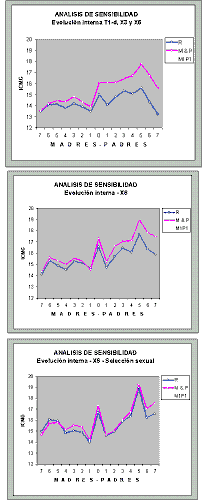4.d) Social and technical issues
4.d.1. Shortage of statistical studies with adequate IQ data
The papers with a large sample are scarce because the fieldwork including this type of variables tends to work with identical twins, twin brothers or adoption programs, and do not include the two progenitors.
Apart from The EDI Study, if there were another one, it would be nice to have access to its row data.
Regardless of sociological topics, the required data is quite costly. For instance, the research needs a good sample design, volunteers to take the test, and specialized personnel to perform the IQ test.
4.d.2. Access to the quantitative data source
To find and access the original quantitative data source to accomplish The EDI Study was the most complicated step of the whole work.
Despite the small magnitude of the analyzed sample, the generation of variables by different groupings and criteria of the available values has allowed for an excellent model sensitivity. This characteristic is one of the model's strong points; even with the vulnerability of the researched correlations, it is significant that some determination coefficients are close to the unit and thousands of checks give a high level of consistency.
In defense of the small sample of quantitative data, we would like to say that, asking for statistical data on intelligence quotients (IQ) of families, we have been virtually traveling for more than one year to numerous worlds of professionals, national and international organizations dedicated to the study of intelligence, public organisms, universities, Internet newsgroups, and international essays on twins. We even turned over the search to a psychometric company, but there were no results.

In the end, a search performed by the Google server's paid service found four different sites. We had entered three of them before and did not found the information. Fortunately, the fourth gave its fruits, although with some difficulty. At least we obtained a sample of quantitative data, even though it was small.
We imagine the personal info and the social and political implications hinder access to the statistical data, or even it does not exist. It would not be the first time an article says it contains IQ raw data of families and, when we tried to find it, we discovered there was not the anticipated data.
Consequently, it looks like the authors of most of the thousands of statistical research articles published on this subject probably did not have access to the quantitative data source and limited themselves to commenting on the results published by other works and theoretical justifications of their point of views.
4.d.3. Modern computer technology
Analytical research with sensitivity analysis of multiple correlation coefficients obtained by linear regression requires a great deal of knowledge of statistical techniques.
The analysis of the correlations of variables with computer models of regression by ordinary least squares is available for quite some time.
Nonetheless, computer capacity has multiplied in recent years spectacularly. It has been essential to the results achieved in the EDI Study.
It is worth pointing out that each time we reorganize the quantitative data, the Excel math worksheet generates more than 10,000 random numbers, hundreds of variables, more than 100,000 coefficients of determination of linear regression for ordinary least squares of the different variations of the model, and presents 200 graphs with 16,000 values, of course, in color. It used to take 3 to 7 seconds.
